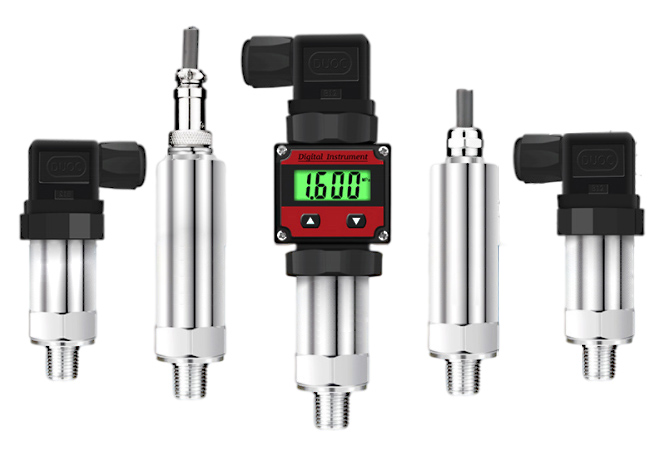What is a Pressure Sensor?
Mon, May 16 by ATO.com
The electrical measuring instrument in the pressure measuring instrument is usually called a pressure transducer (pressuretransducer). It is a sensor that converts the pressure signal into a voltage signal output. Usually the pressure sensor is generally composed of elastic sensing element and displacement sensing element. The function of the elastic sensing element is to make the measured pressure act on a certain area and convert it into displacement or strain, and then the displacement sensing element or strain gauge converts it into an electrical signal that has a certain relationship with the pressure. Sometimes the functions of these two elements are combined.

Features of Pressure Sensors
- How corrosive and conductive is the medium. Select the appropriate type of pressure sensor according to these properties of the medium.
- What is the temperature range of the medium? First, what is the regular temperature range of the medium. According to this information, select a sensor whose compensation temperature is consistent with its range. Second, it is the maximum temperature range of the medium. According to this information, select a sensor with the same temperature range.
- If the above two points are not selected correctly, it is very likely to damage the sensor or even cause an accident.
The main performance parameters of the pressure sensor
- Damage pressure :Damage pressure is the maximum pressure that can be applied to the sensor without damaging the sensor element or sensor housing.
- Rated pressure range: The rated pressure range is the pressure range that satisfies the standard specified value. That is, between the maximum and minimum temperature, the sensor output will meet the specified operating characteristics of the pressure range. In practical application, the pressure measured by the sensor is within this range.
- Maximum pressure range: The maximum pressure range refers to the maximum pressure that the sensor can withstand for a long time without causing a permanent change in the output characteristics. Especially for semiconductor pressure sensors, in order to improve the linearity and temperature characteristics, the rated pressure range is generally greatly reduced. Therefore, it will not be damaged even if it is used continuously above the rated pressure. Generally, the maximum pressure is 2-3 times the maximum rated pressure.
- Linearity: Linearity refers to the maximum deviation from the linear relationship between the sensor output and the pressure within the working pressure range.
- Temperature range: The temperature range of the pressure transducer is divided into compensation temperature range and working temperature range. The compensated temperature range is the temperature range over which the accuracy falls within the rated range due to the application of temperature compensation. The working temperature range is the temperature range in which the pressure sensor can work normally.
- Pressure hysteresis: It is the difference between the sensor output when the minimum working pressure and the maximum working pressure approach a certain pressure at room temperature and within the working pressure range.

